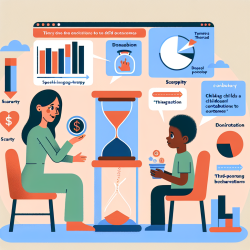As a passionate advocate for children’s mental health, I believe in the power of data-driven decisions to create impactful outcomes. Today, I want to share insights from a significant research article titled "Prevalence of Depression in Iranian School Students: A Systematic Review and Meta-Analysis." This comprehensive study offers critical findings that can help practitioners like us improve our approaches and interventions for student mental health.
Key Findings from the Research
The meta-analysis reviewed 51 studies with a sample size of 537,144 Iranian school students. The findings are both revealing and concerning:
- The overall prevalence of depression among Iranian school students is 37%.
- Depression rates are significantly higher in girls (45%) compared to boys (28%).
- The prevalence of mild, moderate, and severe depression in school students is 31%, 18%, and 11%, respectively.
- Depression rates increase with educational level: 12% in primary, 32% in middle school, 47% in high school, and 46% in pre-university students.
Implications for Practitioners
These findings highlight the urgent need for targeted interventions and preventive measures in schools. Here are some strategies that practitioners can implement:
- Early Screening and Identification: Utilize validated screening tools such as the Beck Depression Inventory (BDI) and the Children Depression Inventory (CDI) to identify students at risk of depression early.
- Gender-Specific Interventions: Given the higher prevalence in girls, design and implement gender-specific mental health programs that address the unique challenges faced by female students.
- School-Based Mental Health Programs: Develop comprehensive mental health programs that include counseling, stress management workshops, and peer support groups.
- Parental Involvement: Educate parents about the signs of depression and involve them in the intervention process to create a supportive home environment.
- Continuous Monitoring: Regularly monitor students’ mental health and adjust interventions as needed to ensure their effectiveness.
Encouraging Further Research
While this meta-analysis provides valuable insights, there is always room for further research to deepen our understanding and improve our practices. Practitioners are encouraged to:
- Conduct longitudinal studies to track the long-term impact of interventions on student mental health.
- Explore the effectiveness of different therapeutic approaches, including online therapy, in reducing depression among students.
- Investigate the role of cultural, social, and economic factors in influencing depression rates among students.
By continuously updating our knowledge and refining our approaches based on the latest research, we can make a significant difference in the lives of our students.
To read the original research paper, please follow this link: Prevalence of Depression in Iranian School Students: A Systematic Review and Meta-Analysis.










